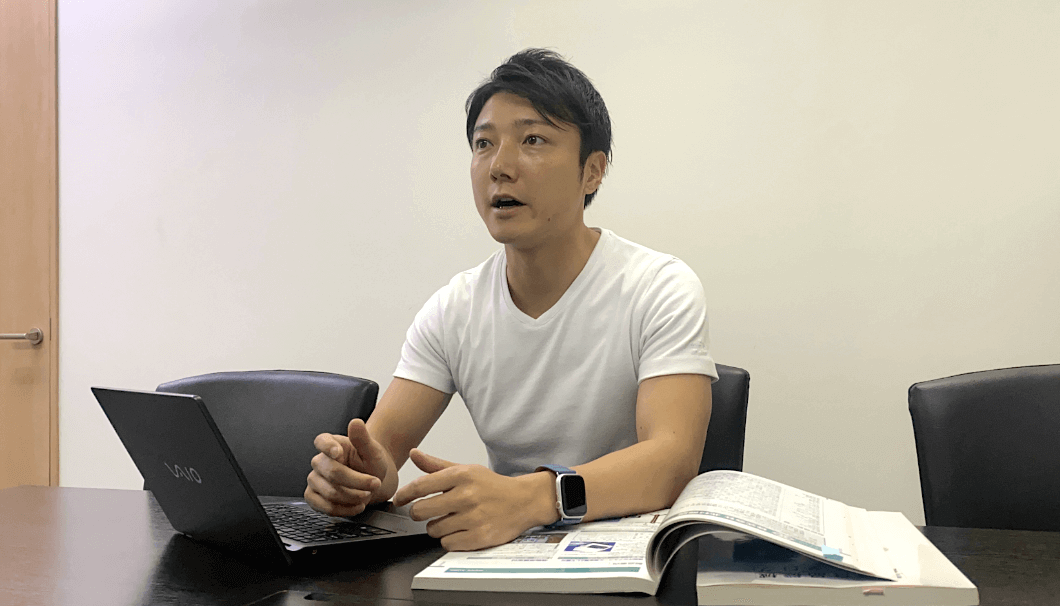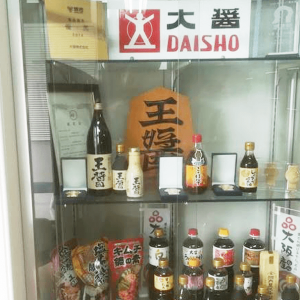
A Closed Market
The domestic market for sake has been shrinking since the late 70s, making it harder for breweries across the country to ensure steady sales. Because of this, if a new kura were suddenly to enter the competition, there are fears that it could create instability and harm business even more.
So, the National Tax Office, who oversees the issuing of brewing licenses, has historically shown almost no interest in allowing new sake breweries to open their doors. They’ve a vested interest in maintaining supply and demand in the country so that the liquor tax revenue keeps flowing.
The rare license has been granted over the years, but only when the new brewery can demonstrate that it will be a stable producer of sake right from the start and not interfere with other kura to a significant degree. Even then, it takes months of stressful negotiations to pull off.
 Yoichi Yoshioka of Obama Brewery was one of few in recent years to acquire a license, but only after a year and a half of negotiations
Yoichi Yoshioka of Obama Brewery was one of few in recent years to acquire a license, but only after a year and a half of negotiations
It’s a system with obvious drawbacks. While it may protect existing breweries, it’s left little room for innovation and new perspectives on sake production. However, on November 20, 2019, the government announced a major change that may begin to shake things up and lead to a whole new crop of fresh new breweries based in Japan.
Beyond Japan
The domestic market for sake may be contracting, but the international market has been growing wildly in the past few years. Countries like China, the US and France have all been embracing the drink in increasingly large numbers and are suddenly creating new opportunities for breweries in Japan to do business.
This has greatly eased the supply and demand situation that the National Tax Office has been trying to protect thus far, and gives the industry more room to grow as a whole. So, certain regulations that have made it almost impossible to start a new brewery will be lifted on the condition that the sake made is only for sale outside of Japan.
For example, one of the most crippling conditions to getting a sake brewing license is that the applicant must have the equipment and materials to annually produce 60,000L (16,000gal) from the start — in other words, a prospective brewer has to be completely set up to mass produce sake even before getting a license to make a drop of it.
 Skilled DIY operations like Den Sake in the USA would have been impossible in Japan until now.
Skilled DIY operations like Den Sake in the USA would have been impossible in Japan until now.
But now, if a new brewery intends to only sell outside of Japan, there will be no minimum production limit, making it a lot easier to get started on a small scale. Other conditions have yet to be finalized, but that alone has made it remarkably easier to begin brewing.
Not only for aspiring entrants to the sake business, this is also good news for ancillary businesses like equipment manufacturers.
We spoke with the head of supplier Kitamura Shoten, Hayato Kitamura, who told us happily, “We see this as a very good trend. Currently we do business with 400 to 500 companies, but as sake production decreases year by year, so does our business… Even with the condition of ‘only overseas markets,’ we see this amendment as a major step in the industry. New sake will be created, adding new value and competition to the wider market. We’re really looking forward to it.”
Also, while we were talking to Kitamura, we decided to have a little fun and ask how much one would expect to spend to set up a brewery from scratch.
How Much Does a New Brewery Cost?
Since there is no 60,000L limit, the cost of equipment for a brand new brewery will become significantly cheaper. However, for the sake of revenue, a new brewery should be able to produce a few thousand Liters per year, and according to Kitamura that would cost around 15 million yen (US$138,000).
Perhaps, if someone were to start with a really barebones setup, they might pull it off for only five or six million yen ($45,000 – $54,000). That being said, it’s important to note that the full set of regulations have not been announced and considering the high-end nature of sake typically sold outside Japan, a new kura should expect to have to use high-quality ingredients and techniques.
Real estate is also an important cost factor, but luckily it’s expected that location will not be as restricted as before since the target market is strictly outside of Japan and competition is not an issue. On the other hand, the local environment is steadily becoming a more important factor for sake consumers and, again, there’s that premium quality expectation.
Whether this makes Japan a more affordable location than another country for setting up a kura depends on the options of the potential brewer, but thanks to these new measures, at least Japan is now in the running for businesses at home and abroad to consider.
This probably will not cure all the problems the sake industry is facing overnight, but it will hopefully usher in some fresh blood and, with it, new possibilities for growth and expansion.





Comments